
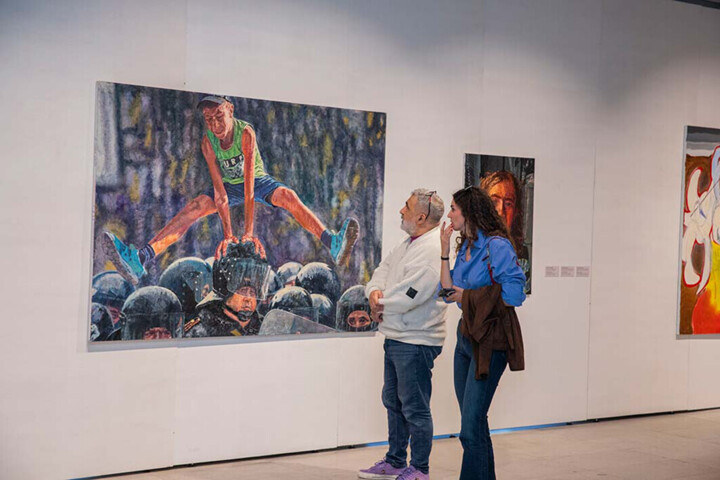
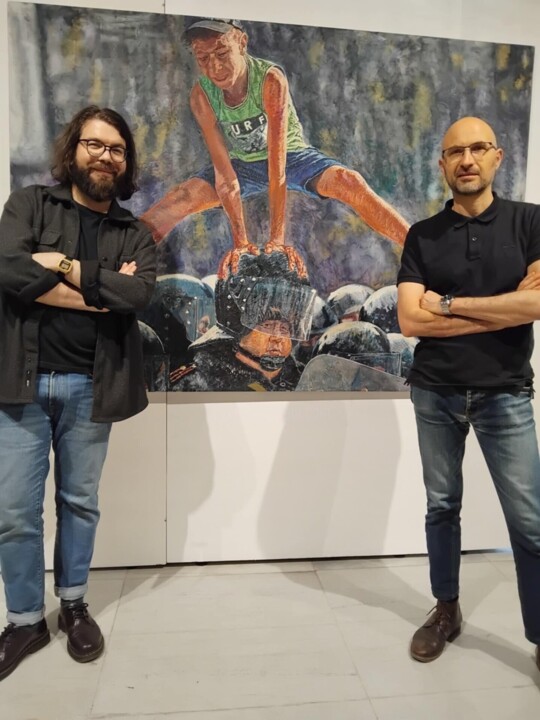
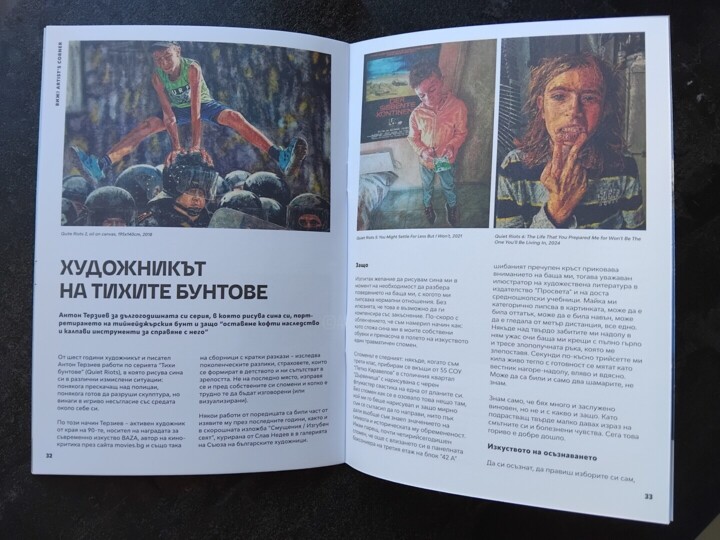
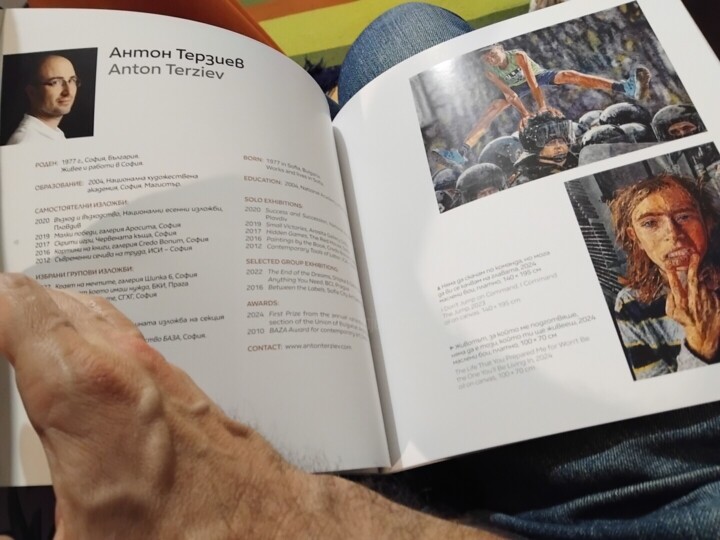


Bu sanat eserinin daha fazla fotoğrafını görmek isterseniz bize bildirin!
- işin arkası / işin tarafı
- Ayrıntılar / Imza / Sanat eserinin yüzeyi veya dokusu
- Durumdaki sanat eseri, Diğer...
I Don't Jump On Command, I Command The Jump (2025) Tablo Anton Terziev tarafından
Daha fazla bilgi
- paketleme (Kutu veya karton ambalaj) Bütün eserler, dikkatle korunan ve sigortalanmış, premium bir taşıyıcı ile gönderilir.
- İzleme Alıcıya teslimine kadar izleme Sipariş. Gerçek zamanlı olarak kargo takip edebilmeniz için bir takip numarası verilecektir.
- Zaman 3 ila 7 günde dünya çapında teslimat (Tahmin etmek)
- Gümrük dahil değildir Fiyata gümrük ücretleri dahil değildir. Çoğu ülkede orijinal sanat eserleri için ithalat vergisi yoktur, ancak indirimli KDV'yi ödemeniz gerekebilir. Gümrük ücretleri (varsa) varışta gümrük idaresi tarafından hesaplanacak ve taşıyıcı tarafından ayrıca fatura edilecektir.
Daha fazla bilgi
- İzlenebilir Online Orijinallik Sertifikası Orijinallik sertifikaları, sanat eserinin kodu taranarak herhangi bir zamanda çevrimiçi olarak doğrulanabilir.
- Belgelendirme değerlendirme sanatçı Uzmanlar bir sanatçının iş ve kariyer çalışma ardından, bağımsız ve güvenilir bir ortalama fiyat değeri kurmak. Ortalama fiyatı değeri belirli bir süre için bir fiyat aralığı sanatçı oturtuyor. Uzmanlar ayrıca, belirli bir iş için daha kesin bir tahmin kurulması istenebilir.
Daha fazla bilgi
SSL sertifikası ile% 100 güvenli ödeme + 3D Secure.
Daha fazla bilgi
Bu görseli web sitenizde, iletişiminizde kullanmak veya türev ürünleri satmak için bir lisans satın alın.
Usage: Web lisansı
| 1500 px | ||
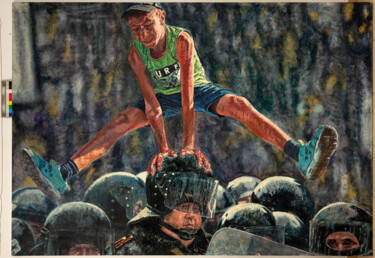
|
1030 px |
| Dosyanın boyutları (px) | 1500x1030 |
| Dünya çapında kullanın | Evet |
| Çoklu desteklerde kullanın | Evet |
| Her tür ortamda kullanın | Evet |
| Satma hakkı | Hayır |
| Maksimum baskı sayısı | 0 (Zero) |
| Satılık ürünler | Hayır |
Satın alır almaz hemen indirin
Bu resim bir lisans ile indirilebilir: bunları istediğiniz zaman indirebilirsiniz.
Kısıtlamalar
ArtMajeur'daki tüm resimler, sanatçılar tarafından yaratılan orijinal sanat yapıtlarıdır, tüm hakları kesinlikle saklıdır. Bir lisansın edinilmesi, lisansın şartları uyarınca imajı kullanma veya kullanma yetkisine sahiptir. Yeniden çerçeveleme veya resmin bir projeye mükemmel şekilde uyacak şekilde yeniden odaklanması gibi küçük değişiklikler yapmak mümkündür, ancak özgün çalışmaya zarar verebilecek herhangi bir değişiklik yapmak yasaktır. Bütünlüğünde (şekillerin değiştirilmesi, Bozulmalar, kesim, renk değişimi, eleman ilavesi vb.) Sanatçının önceden yazılı bir yetkisi bulunmaması durumunda.
Özel lisanslar
Kullanımınız standart lisanslarımız tarafından karşılanmıyorsa, özel lisans için lütfen bizimle iletişime geçin.
Sanat resim bankası-
Orijinal sanat (One Of A Kind)
Tablo,
Tuval tarihinde
Petrol
- boyutlar Yükseklik 57,1in, Genişlik 76,8in
- Çerçeveleme Bu resim çerçeveli değil
- Kategoriler Resimler $20.000'nun altında Figüratif Siyaset
The painting’s focal point is a youthful figure leaping over a heavily armored officer. The choice to place this figure mid-action—hands pressing atop the helmet—lends the painting a kinetic energy. Terziev halts a fleeting instant, reminiscent of photojournalistic “freeze-frames,” yet renders it in a painterly style. This tension between photo-like immediacy and the expressiveness of oil paint gives the scene both documentary clarity and a certain timelessness.
The tight framing around the main subjects emphasizes the confrontation. In the background, a phalanx of similarly clad officers recedes into an indistinct crowd, hinting at a broader social or political apparatus. The dynamic pose of the young figure—legs extended, arms bearing weight—cuts diagonally across the canvas, drawing the viewer’s eye from the figure’s face to the helmet below. This diagonal thrust is a compositional technique often employed to heighten drama, recalling, for instance, the angled bodies in Eugène Delacroix’s “Liberty Leading the People.” Terziev appears to favor a saturated palette: the vivid greens of the protester’s shirt and the deep blacks of the riot gear contrast sharply. The background’s muddled, smoky hues evoke tension and turmoil. Despite this gloom, the central figure seems illuminated—whether literally or symbolically—standing out against the massed uniforms. This painterly contrast underscores a classic artistic trope: the individual’s bright presence opposing a darker, more uniform collective force.
At first glance, the painting comments on the power dynamic between state authority (the officer in riot gear) and the individual (the agile figure vaulting over him). The act of physically leaping above the officer’s head becomes a metaphor for transcending imposed limits or commands. It suggests a reversal of typical power structures: the officer, usually the figure of control, is relegated to a support—albeit involuntarily.
The subject’s youthful appearance adds another layer of resonance. Depicting a young individual in direct, physical interaction with law enforcement draws upon an established tradition of protest imagery, where youth movements have historically galvanized political change. This generational tension recalls iconic photographs from the 20th and 21st centuries, in which young protesters often become the faces of revolution or societal critique.
The painting also alludes to the idea of the human body as a site of protest. The choice to vault, rather than to push or to attack, speaks to a form of resistance that is acrobatic, creative, and emblematic of personal freedom. It contrasts with the rigid, disciplined body language of the officers. In this sense, the work resonates with a lineage of politically charged performance art and photography, wherein gestures of dance or athleticism become statements of defiance.
While Terziev’s style is distinct from the Romantic or Baroque, the thematic of state power versus individual vulnerability recalls Francisco Goya’s **“The Third of May 1808.”** There, too, we see a focus on the human cost of political strife. Goya’s unflinching look at violence resonates in Terziev’s more contemporary depiction of confrontation, even if the latter is less about overt bloodshed and more about tension and symbolic subversion.
More directly, the painting aligns with 20th- and 21st-century traditions of politically engaged art—think of works by artists such as Banksy or Ai Weiwei, who fuse bold imagery with pointed social critique. Terziev’s piece, however, remains firmly in the realm of painting, bringing to mind large-scale compositions that historically served as calls to action or documentation of collective struggle.
Although the painting captures a realistic moment, the brushwork seems deliberately visible—especially in the musculature of the figure and the textured rendering of the riot gear. This blend of realism and expressionistic brush handling imparts an emotive quality. The painting avoids the polished sheen of hyperrealism, instead embracing a slightly raw surface that mirrors the rawness of civil strife.
As a large-scale work, the painting presumably envelops the viewer, magnifying the tension between protester and authority. Large canvases historically lend a monumental aura to their subject matter—an effect that can transform a single leap into a sweeping allegory of societal power struggles.
I Don’t Jump On Command, I Command the Jump” stands as a compelling example of contemporary political painting. Through a vividly captured, acrobatic gesture of defiance, Anton Terziev provokes reflection on youth, power, and the state’s response to public dissent. The painting’s dynamic composition, saturated color contrasts, and expressive brushwork imbue it with a timeless urgency. In art historical terms, it joins a lineage of works that memorialize moments of societal upheaval—echoing both the immediacy of photojournalism and the grandeur of historical painting.
By framing the tension between the individual and the forces of authority in a single, frozen leap, Terziev not only documents a poignant political instant but also suggests the broader, universal spirit of protest that transcends geographic and temporal boundaries. The painting thus resonates as a contemporary emblem of resilience—both a snapshot of a specific socio-political climate and a more enduring symbol of the human impulse to rise above constraints.
İlgili temalar
Çağdaş bir Bulgar sanatçı olan Anton Terziev, çeşitli çağdaş konularla bağlantı kurmak için keskin ironiyi sanatsal bir araç olarak kullanmanın ustasıdır. Eserleri, sade ve eleştirel bir imgeyi aktaran ikonografinin derin kullanımıyla karakterize edilir. Anton, sanatsal repertuarında, riskleri, becerileri ve hikaye anlatımını ustaca bir araya getiriyor ve sonuçta sosyal yorum, mizah ve sanatçının durumu hakkında mesajlar içeren ince bir dokunuş taşıyan figüratif çağdaş sanat ortaya çıkıyor.
Anton Terziev iki farklı kaynaktan ilham alıyor. Birincisi, sanatı çoğunlukla gerçek hayattaki olaylardan doğuyor ve onun etrafında, yaratıcı sürecini ateşleyecek şekilde gelişiyor. İkincisi, hayal gücü, çalışmalarında çok önemli bir rol oynuyor ve canlı ve düşündürücü görüntüler oluşturmasına olanak tanıyor. Yarattıklarının her biri, filmlerden ve kitaplardan alınan popüler kültürün incelikli unsurlarıyla süslenmiştir. Anton, iyi sanatın yumuşak ama etkili bir şekilde iletişim kurduğuna inandığından, her parçanın içinde izleyiciyi bunaltmadan deneyimlerini zenginleştiren bir anlatı, bir metametin saklıdır.
Anton'un çalışmalarını farklı kılan şey, izleyicisine açık uçlu bir merak duygusu bırakma konusundaki sarsılmaz kararlılığıdır. Eserleri izleyicileri sanatla diyaloğa davet ediyor, onları sunduğu anlatıları yorumlamaya, sorgulamaya ve keşfetmeye teşvik ediyor. Eserleri için mükemmel başlığı seçmek, genellikle edebiyattan, sinemadan veya müzikten ilham alarak üstesinden geldiği bir zorluktur.
Anton Terziev'in ressam olarak kariyeri, yazar kimliğiyle karmaşık bir şekilde iç içe geçmiş durumda. Fikirleri, çeşitli yeteneklerini yansıtan resimler ve sanat objeleri şeklinde şekilleniyor. Resmin ötesinde sanatsal vizyonunu performanslar, film yapımcılığı ve tasarım yoluyla hayata geçirerek yaratıcı ifadeye çok yönlü bir yaklaşım sergiliyor.
-
Milliyet:
BULGARISTAN

- Doğum tarihi : 1977
- Sanatsal alanlar: Profesyonel sanatçıların eserleri,
- Gruplar: Profesyonel Sanatçı Çağdaş Bulgar Sanatçılar















